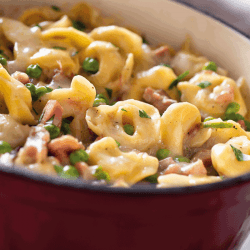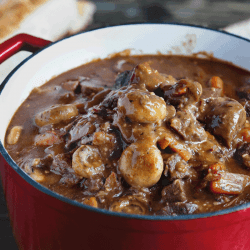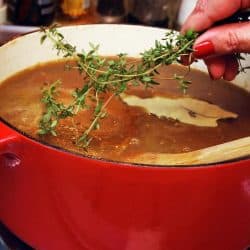 Maybe you remember jars of bacon grease on your parents' kitchen counter. Or you have a friend who uses their oil in their deep fryer for more than one cooking event. But you're going to be frying fish and you want to know, can you reuse the oil after frying fish?
Maybe you remember jars of bacon grease on your parents' kitchen counter. Or you have a friend who uses their oil in their deep fryer for more than one cooking event. But you're going to be frying fish and you want to know, can you reuse the oil after frying fish?
If you've used a high heat oil in a deep fryer to cook your fish then, yes, you can reuse your oil. But you may not want to unless you're cooking fish again. The oil might impart the fish taste to other dishes. If you've pan-fried your fish, then no, you'll want to discard your cooking oil.
Let's look at this subject a bit more in-depth, shall we?
Using Oil To Fry Fish
Fried fish, whether deep-fried or pan-fried, is delicious. If you're making it at home, you'll have to take into consideration your tools. Do you have a deep fryer, or do you fry your fish in a dutch oven or cast-iron skillet? Which tool you use will make a difference in your oil.
Read more: How Much Does A Deep Fryer Cost?
What Is The Best Oil To Fry Fish In For A Castiron Skillet?
Did you inherit a perfectly seasoned heavy castiron skillet? Do you love a crisp piece of pan-fried fish? We sure do. So what is the best oil for frying up that delectable treat? If you're using a meatier fish like salmon or tuna that doesn't require a batter then you can use a small amount of olive oil or butter to sear the outside and keep the inside moist.
If you're battering your fish, which is typically the choice with flakier white fishes like tilapia and catfish, then you want to consider using a high heat oil. Peanut oil is a great choice, but if someone has nut allergies then it's a no-go.
Coconut oil is a healthy option, as is avocado oil. The first may impart a bit of coconut flavor and the latter is quite pricey. Perhaps the most common high heat oil used for fish is canola oil, though it's not the healthiest choice.
What Is The Best Fish Frying Oil For A Dutch Oven?
Dutch ovens are versatile kitchen tools, as they can be used on the stovetop and the oven and can be transferred between the two. Their deep forms allow for food to be totally immersed in the oil for frying. Remember not to fill the basin more than halfway full with oil though because it can be dangerous, and you'll need a digital thermometer to check your oil's temperature.
Keep your oil temperature in your dutch oven between 375 and 400 degrees.
See this awesome digital thermometer on Amazon.
Here's a beautiful enameled blue dutch oven that looks as gorgeous as it is functional. It can withstand temperatures as high as 500 degrees.
Click here to see this on Amazon.
As you're not likely to be pan searing in a dutch oven, consider your oils as you would for a deep fryer. You want something neutral in flavor that's going to withstand high heat. Canola, peanut, and grapeseed oil are great choices.
Oils For Your Deep Fryer
A home deep fryer is a great tool to have if you're going to be frying foods regularly. It keeps messes to a minimum, and they often come with built-in temperature controls for perfect frying. They also have a basket for ease of food removal.
When using a deep fryer, you want to consider the oil's smoke point (which is when the oil starts to break down) and its flavor. Because fish typically has a delicate flavor you don't want an oil that will overwhelm it. And because the best temp for frying fish is between 360 and 380, you want a higher smoke point.
That said, the best oils for your deep fryer for frying fish are:
- Peanut oil - prevents flavor transfer
- Canola oil - has a high smoke point and a neutral flavor that won't overpower your fish
- Cottonseed oil - affordable if you're frying for a crowd
- Coconut oil - your healthiest option
Read more: How Much Oil Do You Put in a Deep Fryer?
How Do You Clean The Oil After Frying Fish?
With both your cast iron skillet and a dutch oven it's best to just discard your cooking oils. You don't want to add them to your compost since fats are a no-no, but you can use paper towels to soak up the excess and discard in your regular garbage.
With your deep fryer, you may have the option on your machine to filter the oil. This deep fryer from TFAL has a drain for the spoiled oil to be discarded and a filtration system to clean the usable oil.
Click here to see this fryer on Amazon.
You can also manually strain your oil (once it's cooled) through a cheesecloth and store in a cool, dark spot in glass jars for reuse. Keep in mind that with fish oil or oil used for seafood, that you may want to keep it separate for that purpose only. One reason is for transferred flavor, the other is not to expose someone with seafood allergies to an allergen inadvertently.
How Long Can You Keep Oil After Frying Fish?
If your oil starts to smoke or makes foods taste "off" then you've kept it for too long. In restaurant settings, the fryer oils are strained daily to remove any bits of leftover food. This will prolong the lifespan of the oil.
Three months is a pretty standard guideline for the maximum amount of time to keep old oil around. Or if your stored oil has become cloudy in its appearance, that's another indication it's time to move on to fresh oil. Interestingly though, many cooks suggest saving just a touch of the used oil to add to a new batch, as it will give the oil a better flavor.
We hope this post has helped you with your cooking and frying journey! Happy frying!




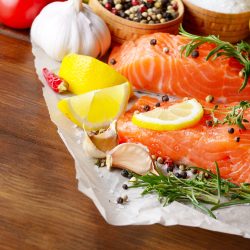
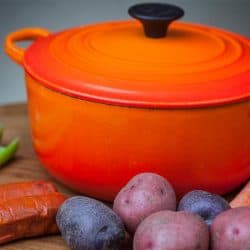
![chef glazing oil on a dutch oven preparation for cooking. Can You Fry In A Dutch Oven [And How To]](https://kitchenseer.com/wp-content/uploads/2021/10/chef-glazing-oil-on-a-dutch-oven-preparation-for-cooking.-Can-You-Fry-In-A-Dutch-Oven-And-How-To-250x250.png)
